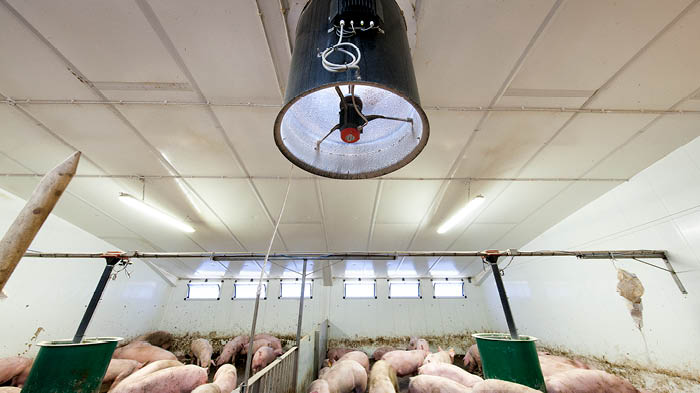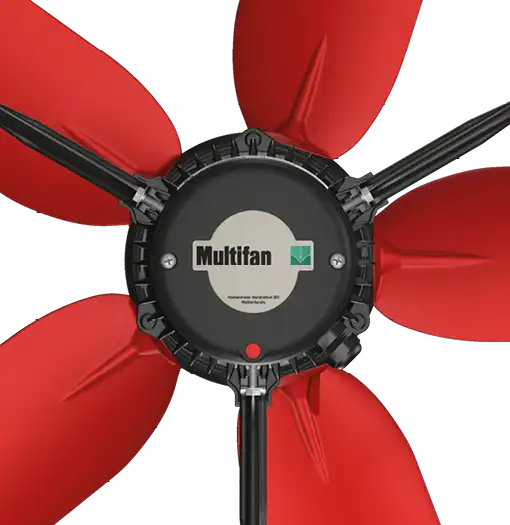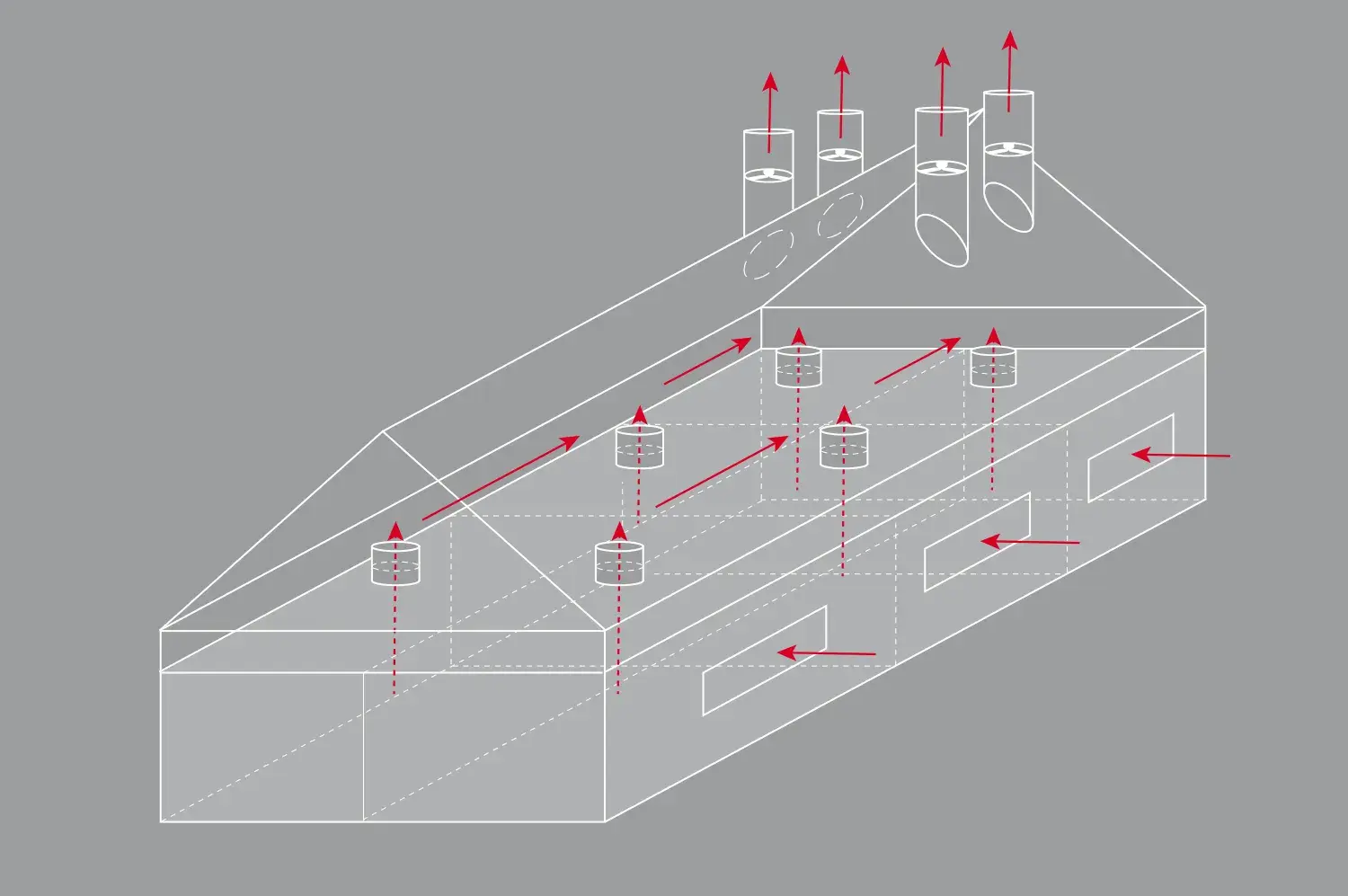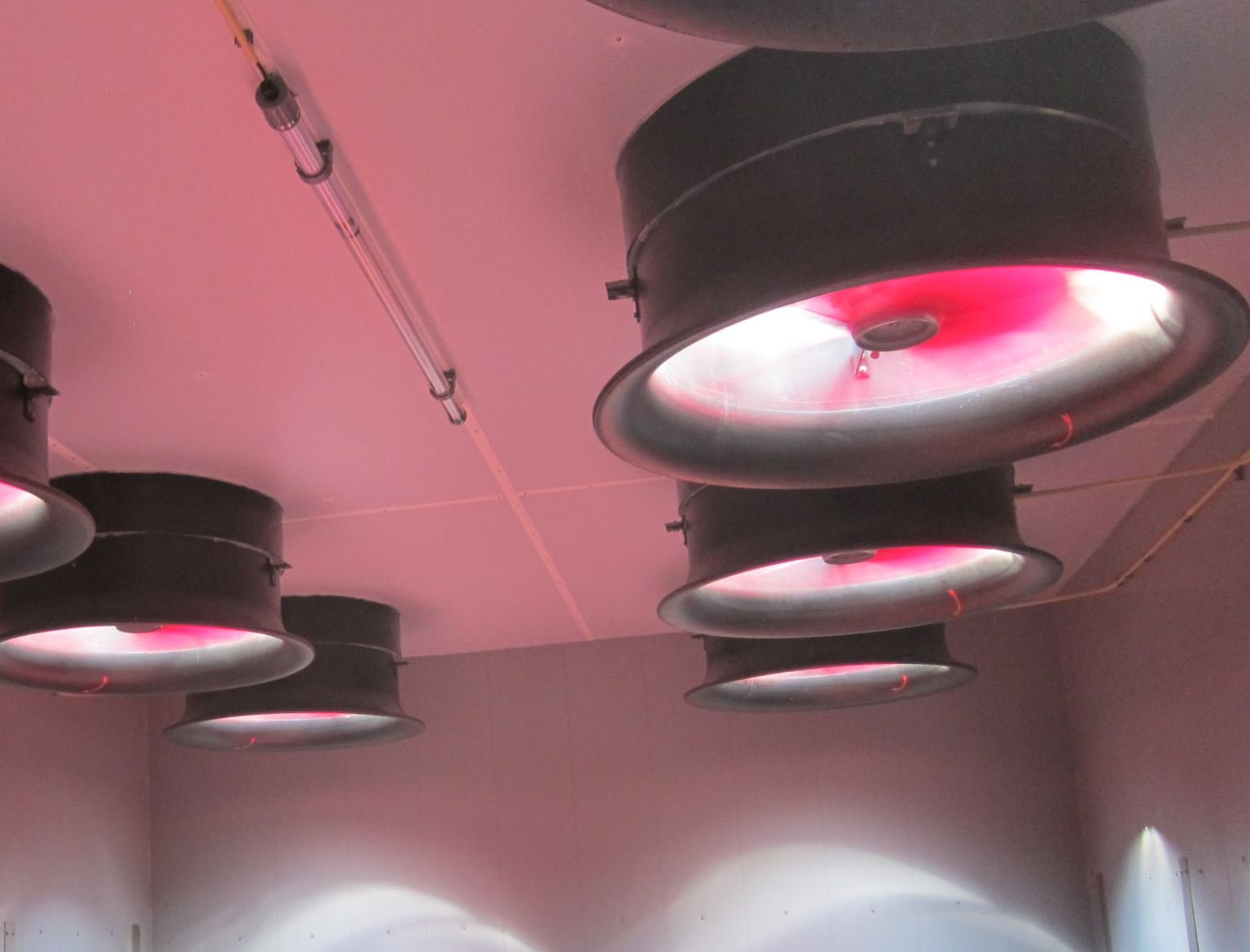Optimal growth
To ensure optimal growth, pigs need heat, fresh air, rest, good hygiene and light, in addition to good feed and water. If one or more of these elements are disrupted, diseases, disorders and other problems can quickly arise, such as:
- Pulmonary disorders
- Intestinal problems
- Tail and ear biting
- Slow growth
- Reduced feed uptake
- Higher feed conversion
- Pen contamination
- Increased mortality
Ideal temperature
One of the most important elements is the temperature in the barn. The ideal temperature for pregnant sows is around 19 to 20 °C and a few degrees higher for fattening pigs and piglets, depending on their weight. In case of high outside temperatures, just think of the last dry and hot summer, many pig barns struggle to offer pigs the necessary cooling.
Pigs are very sensitive to heat stress: their feed uptake decreases at high temperatures. In the case of farrowing sows, milk production then decreases, resulting in reduced piglet growth. Reduced growth is also a result of lower feed uptake in fattening pigs. Heat stress can also lead to intestinal problems and other diseases, because pathogens thrive in high temperatures and reduce the resistance of the animals.
Healthy pigs and an optimal operating result
An optimal barn climate can save much trouble and money.
After all, it significantly affects the resistance of the animals and infection levels. But in addition, and no less important, your operating result as well!
Many of the circumstances in which pigs feel 'happy' can be optimally controlled with the right ventilation and fans, for example:
- Thermal comfort for the pigs
- Removal of harmful substances and gases (ammonia)
- Supply of fresh air
“A pig does not have the ability to put on and take off clothing. That is why pig farmers must help by optimizing the stable climate. That way, they can improve animal health and earn money,"
said Dr. Dirk Hesse, Managing Director of BFL.
Go for healthy pigs and an optimal operating result, with proper ventilation!




